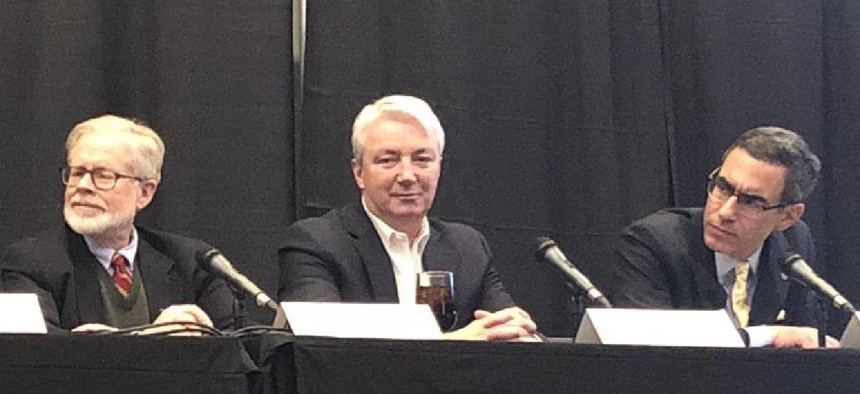New York is facing a major state budget shortfall this year, no matter whether it ends up being $1.7 billion, $4.4 billion or even a whopping $6.8 billion.
Just like the wide range of figures put forth by budget experts to quantify the projected budget gap, there’s a variety of opinions among politicians as to how bad the state’s fiscal situation truly is.
Gov. Andrew Cuomo has been running with a flat $4 billion figure, which he cited several times during his State of the State address last week. Exacerbating the state’s troubling financial situation, he said during his speech, was another $2 billion in federal health care cuts – and that’s not even getting into the long-term fiscal impact in New York of the new federal tax law, or other looming cuts proposed by Republicans in Washington, D.C.
“We have federal and economic challenges never experienced before,” Cuomo said. “They threaten the essence of our economy. Short term, a $4 billion deficit and $2 billion in cuts in federal aid. Even more challenging, long term, our federal government has hurt our state’s economic position, both nationally and internationally, by taxing our state and local taxes. They made us less competitive and they are helping other states at our expense.”
However, if the state maintains the practice of keeping overall spending increases at 2 percent, this year’s shortfall would be an estimated $1.7 billion, according to the Cuomo administration's own budget projections.
“There are obviously some difficult choices to be made because of the budget deficit,” state Sen. Phil Boyle, a Long Island Republican, said on Tuesday at City & State’s annual State of Our State event in Albany to kick off the 2018 legislative session. “But I do not believe it is as bad as we have seen in the past. We’ve had much greater deficits, and everyone keeps saying, oh, $4 billion-plus. If we stay within the 2 percent cap that we’ve had for a number of years now, it’s $1.7 billion.”
A gap of that size, Boyle continued, is “not good” but would be “manageable” as long as elected officials make the right spending choices and spread cuts across the entire state budget.
But lawmakers like Assemblyman Richard Gottfried say even a $1.7 shortfall is “pretty scary.” The Manhattan Democrat noted that Medicaid spending, which makes up close to half of the state budget, is projected to continue to grow at a rate capped at 4 percent per year.
“So keeping a program of $60 billion-plus a year, that ordinarily grows at 4 percent, to a 2 percent limit is a pretty heavy hit,” Gottfried, the longtime chairman of the Assembly Health Committee, said during the panel discussion at City & State's event. “And even $1.7 billion in a deficit, if you think back over previous years, is a pretty extraordinary quantity to deal with.”
The other major chunk of the state budget is education, which could also be a political minefield for anyone seeking cost savings. Gottfried said that school aid, which makes up about 40 percent of the state budget, is an area where “nobody in their right mind” would propose cuts.
“Our annual discussion about school aid is whether the increase in the state school aid budget should be twice what the governor proposed, or maybe a little less than twice what the governor proposed,” Gottfried said. “And I say this having served with eight governors. This is nothing new.”
So where will state officials look as they try to identify areas to make cuts? Gov. Andrew Cuomo is expected to release his executive budget proposal this month, which will spell out in detail how he is hoping to balance the upcoming budget.
In the meantime, Boyle, the lone Republican on the panel, said calls by education officials for an increase in school aid in the range of $2 billion or more is simply unrealistic.
“That’s not going to happen,” he said. “We have to be realistic. I think we’re going to have more money put into education and health care – those two areas that have increased the last few years where other agencies have stayed level – that’s going to have to come way down. We’re going to try to be a little more across the board, but nowhere near $2.5 billion for education.”
Other state lawmakers appear to be deferring to the governor and waiting to react to his spending plan.
“How we’re going to deal with it? I don’t know,” Gottfried said. “We’ll get through this somehow. My bet is we will not get through this budget without doing significant damage to some important things.”


